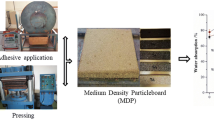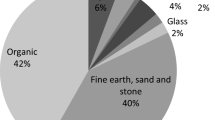Abstract
The distinguishing features of rice husk are high strength properties, chemical stability, high ash content, and low nutritional value, which are determined by the composition and structure of this type of raw material. The goal of the study was to determine optimal methods of mechanical treatment for the performance of a solid-phase reaction of silicon dioxide from rice husk with polyphenol compounds. Different regimes of the treatment of plant raw material have been compared. It has been shown that, for the solid-phase reaction of silicon dioxide from plant raw material with polyphenol compounds to occur, both the destruction of the supramolecular complex of silicon dioxide with the lignocellulose matrix, which is accomplished by fine grinding, and the plastic deformation of the silicon dioxide phase with the formation of reaction centers are necessary. These operations can be brought about using grinders with the attrition and shear modes of operation, including roller mills. It is preferable that silicon dioxide is in the composition of plant raw material since the reaction between silicon dioxide and polyphenols with the formation of surface complexes requires the presence of silanol groups. If silicon dioxide is derived from rice husk by conventional methods, most hydroxyl groups are eliminated, which significantly decreases the reactivity.
Similar content being viewed by others
References
Van Dyck, K., Van Cauwenbergh, R., Robberecht, H., and Deelstra, H., Fresenius J. Anal. Chem., 1999, no. 363, pp. 541–544.
Voronkov, M.G., Zelchan, G.I., and Lukevic, Je.Ya., Kremnii i zhizn’ (Silicon and Life), Riga, 1978.
Shapolova, E.G. and Lomovsky, O.I., Russ. J. Bioorg. Chem., 2013, vol. 39, no. 7, pp. 765–770.
Shapolova, E.G. and Lomovsky, O.I., J. Int. Sci. Publ.: Mater. Methods Technol., 2013, vol. 7, no. 3, pp. 39–48.
Park, B., Wi, S.G., Lee, K.H., Singhb, A.P., Yoon, T., and Kimb, Y.S., Biomass Bioenergy, 2003, vol. 25, pp. 319–327.
Kabata-Pendias, A., Mikroelementy v pochvah i rasteniyakh (Trace Elements in Soils and Plants), Moscow, 1989.
Zemnukhova, L.A. and Nikolenko, Yu.M., Zh. Obshch. Khim., 2011, vol. 81, no. 4, pp. 602–608.
Zemnukhova, L.A., Babushkina, T.A., and Klimova, T.P., Zh. Obshch. Khim., 2007, vol. 77, no. 6, pp. 917–922.
Avvakumov, E., Senna, M., and Kosova, N., Soft Mechanochemical Synthesis: A Basis for New Chemical Technologies, Boston, 2001.
Ermakova, A.I., Metody biokhimicheskogo issledovaniya rastenii (Methods of Biochemical Research of Plants), Leningrad, 1987.
Domburg, G.Je., Termicheskii analiz tsellyulozy. Metody issledovaniya tsellyulozy (Thermal Analysis of Cellulose. Cellulose Research Methods), Riga, 1981, pp. 111–125.
Segal, L., Creely, J.J., Martin, A.E., and Conrad, C.M., Text. Res. J., 1959, vol. 29, no. 10, pp. 786–794.
Zemnukhova, L.A., Fedorishcheva, G.A., Egorov, A.G., and Sergienko, V.I., Zh. Prikl. Khim., 2005, vol. 78, no. 2, pp. 324–328.
Shapolova, E.G., Korolev, K.G., and Lomovskii, O.I., Khim. Interes. Ustoich. Razvit., 2010, vol. 18, no. 5, pp. 663–668.
Author information
Authors and Affiliations
Corresponding author
Additional information
Original Russian Text © E.G. Shapolova, O.I. Lomovskij, 2015, published in Khimiya Rastitel’nogo Syr’ya, 2015, No. 2, pp. 69–76.
Rights and permissions
About this article
Cite this article
Shapolova, E.G., Lomovskij, O.I. Features of the mechanical treatment of rice husk for the performance of the solid-phase reaction of silicon dioxide with polyphenols. Russ J Bioorg Chem 42, 777–782 (2016). https://doi.org/10.1134/S1068162016070141
Received:
Accepted:
Published:
Issue Date:
DOI: https://doi.org/10.1134/S1068162016070141




